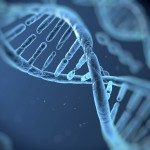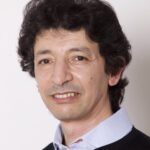Lien vers Pubmed [PMID] – 16219682
Lien vers HAL – pasteur-03926862
Lien DOI – 10.1242/jcs.02636
Journal of Cell Science, 2005, 118 (20), pp.4593-4603. ⟨10.1242/jcs.02636⟩
Defects in myosin VIIa, the PDZ-domain-containing protein harmonin, cadherin 23 and protocadherin 15 (two cadherins with large extracellular regions), and the putative scaffolding protein Sans underlie five genetic forms of Usher syndrome type I (USH1), the most frequent cause of hereditary deafness-blindness in humans. All USH1 proteins are localised within growing stereocilia and/or the kinocilium that make up the developing auditory hair bundle, the mechanosensitive structure receptive to sound stimulation. Cadherin 23 has been shown to be a component of fibrous links interconnecting the growing stereocilia as well as the kinocilium and the nearest tall stereocilia. A similar function is anticipated for protocadherin 15. Multiple direct interactions between USH1 proteins have been demonstrated. In particular, harmonin b can bind to the cytoplasmic regions of cadherin 23 and protocadherin 15, and to F-actin, and thus probably anchors these cadherins to the actin filaments filling the stereocilia. Myosin VIIa and Sans are both involved in the sorting and/or targeting of harmonin b to the stereocilia. Together, this suggests that the disorganisation of the hair bundles observed in mice mutants lacking orthologues of USH1 proteins may result from a defect of hair-bundle-link-mediated adhesion forces. Moreover, several recent evidences suggest that some genes defective in Usher type II syndrome also encode interstereocilia links, thus bridging the pathogenic pathways of USH1 and USH2 hearing impairment. Additional functions of USH1 proteins in the inner ear and the retina are evident from other phenotypic abnormalities observed in these mice. In particular, myosin VIIa could act at the interface between microtubule- and actin-based transport.


